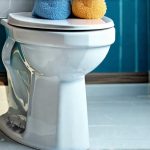The sudden, overwhelming urge to pee is an experience most women are intimately familiar with. It’s more than just needing to visit the restroom; it’s that frantic scramble to find one now, accompanied by a rising tide of anxiety and potentially, the embarrassing possibility of leakage. This isn’t merely a minor inconvenience for many – it can significantly impact daily life, affecting social activities, work performance, and overall well-being. While often dismissed as a normal part of life, frequent or severe urgency deserves attention because it could signal an underlying issue that needs addressing. Understanding the causes, coping mechanisms, and when to seek professional help is crucial for regaining control and confidence.
This sensation, formally known as urinary urgency, stems from complex interplay between the bladder, nervous system, and pelvic floor muscles. It’s not always about having a full bladder; it’s more about the brain misinterpreting signals or receiving exaggerated messages that trigger the need to void. Factors range from simple lifestyle choices like excessive caffeine intake to more complex medical conditions impacting bladder function. The good news is that proactive management, incorporating behavioral changes and potentially professional guidance, can dramatically reduce the frequency and intensity of these urgent episodes, allowing women to live fuller, less anxious lives.
Understanding the Causes of Sudden Urgency
Urinary urgency isn’t a disease itself; it’s usually a symptom. Pinpointing the underlying cause is the first step toward effective management. A multitude of factors can contribute, making a comprehensive understanding essential. One common culprit is overactive bladder (OAB), where the bladder muscles contract involuntarily even when not full, creating a strong and sudden urge to urinate. This isn’t always related to age, though it becomes more prevalent as we get older due to natural changes in muscle tone and hormonal shifts.
Beyond OAB, lifestyle factors play a significant role. – Caffeine acts as a diuretic, increasing urine production. – Alcohol has a similar effect and can also impair bladder control. – Excessive fluid intake, particularly before bedtime, can lead to nighttime urgency. – Spicy foods can irritate the bladder in some individuals. Certain medical conditions such as urinary tract infections (UTIs), diabetes, neurological disorders (like multiple sclerosis or Parkinson’s disease), and even hormonal changes during menopause can all contribute to increased urgency. If you experience a sudden need to go in certain places, it could be related to underlying conditions.
Finally, pelvic floor dysfunction is a frequent underlying factor. The pelvic floor muscles support the bladder, uterus, and rectum; when these muscles are weak, damaged, or uncoordinated – often due to childbirth, surgery, or chronic straining – they can’t effectively control bladder function, leading to urgency and potential leakage. It’s important to remember that it is not a sign of personal failing but rather a physiological issue that can be addressed with appropriate interventions. If you find yourself needing to go when changing temperature, this could indicate an underlying issue.
Behavioral Strategies for Immediate Relief
When the sudden urge strikes, several techniques can help manage the situation and potentially prevent accidents. These strategies are about taking control in the moment and calming the nervous system’s alarm bells. The first step is to avoid rushing to the bathroom. Instead, try these:
1. The Stop-Start Technique: As you feel the urge, stop what you’re doing and sit or stand still. Take slow, deep breaths. This helps calm your nervous system and can temporarily reduce the urgency. Gently contract your pelvic floor muscles (as if stopping urination midstream – though don’t practice this during actual urination) for a few seconds, then release. Repeat several times while focusing on slowing down the urge.
2. Distraction: Shift your focus away from the urge. Count backwards from 100 by sevens, mentally recite a poem, or engage in a simple mental task. This can divert your brain’s attention and lessen the perceived intensity of the urgency.
3. Pelvic Floor Contractions (Kegels): If you’re trained to do them properly, quickly performing several Kegel exercises can sometimes help “override” the urgent signal. You might want to learn how to control urgency in public situations.
These techniques aren’t cures but rather tools for managing symptoms in the moment. Consistent practice and integration into daily life are key to maximizing their effectiveness. Importantly, if these strategies consistently fail or urgency is severe, it’s crucial to seek professional evaluation to rule out underlying medical conditions. Remember that practice makes perfect with pelvic floor exercises; consistency is vital for strengthening those muscles.
Long-Term Lifestyle Adjustments
Managing urinary urgency isn’t just about reacting in the moment; it requires proactive lifestyle adjustments to minimize triggers and support bladder health. This involves a holistic approach, looking at both what you consume and how you behave throughout your day. A key aspect is fluid management. While staying hydrated is essential, timing matters. – Reduce fluid intake 2-3 hours before bedtime to minimize nighttime urgency. – Avoid large volumes of fluids at once; instead, sip water consistently throughout the day. – Limit or eliminate caffeine, alcohol, and carbonated beverages, as they are known bladder irritants.
Furthermore, dietary changes can play a role. Some individuals find that certain foods (spicy foods, citrus fruits, artificial sweeteners) exacerbate their symptoms. Keeping a food diary to identify personal triggers can be incredibly helpful. Regular exercise is also beneficial, but avoid high-impact activities that put excessive strain on the pelvic floor. Focus instead on low-impact exercises like walking, swimming, or yoga. Finally, maintaining a healthy weight reduces pressure on the bladder and pelvic floor muscles. Preventative measures are often more effective than reactive ones when it comes to long-term bladder health. Proper sugar management can also contribute to overall urological wellness.
Seeking Professional Help & Available Treatments
If urgency persists despite lifestyle modifications and behavioral strategies, it’s time to consult a healthcare professional – typically a gynecologist or urologist specializing in female pelvic medicine and reconstructive surgery. They can conduct a thorough evaluation to determine the underlying cause and recommend appropriate treatment options. Diagnostic tests may include a urine analysis (to check for infection), a bladder diary (to track fluid intake, voiding habits, and urgency episodes), post-void residual measurement (to assess how well the bladder empties), and urodynamic testing (to evaluate bladder function).
Treatment options vary depending on the diagnosis. For OAB, medications such as anticholinergics or beta-3 agonists can help relax the bladder muscles and reduce urgency. Pelvic floor physical therapy is often recommended to strengthen pelvic floor muscles and improve coordination. In some cases, more advanced treatments like sacral neuromodulation (a small device implanted near the sacrum to regulate nerve signals) or botulinum toxin injections into the bladder may be considered. It’s important to discuss all available options with your healthcare provider to determine the best course of action for your specific situation and remember that a proactive approach, combined with professional guidance, can significantly improve quality of life and restore confidence. If you are managing multiple medications as a urology patient, polypharmacy management might be helpful. Understanding pelvic pain is also important for overall health. Also, remember to practice good hygiene and UTI risk management.





















